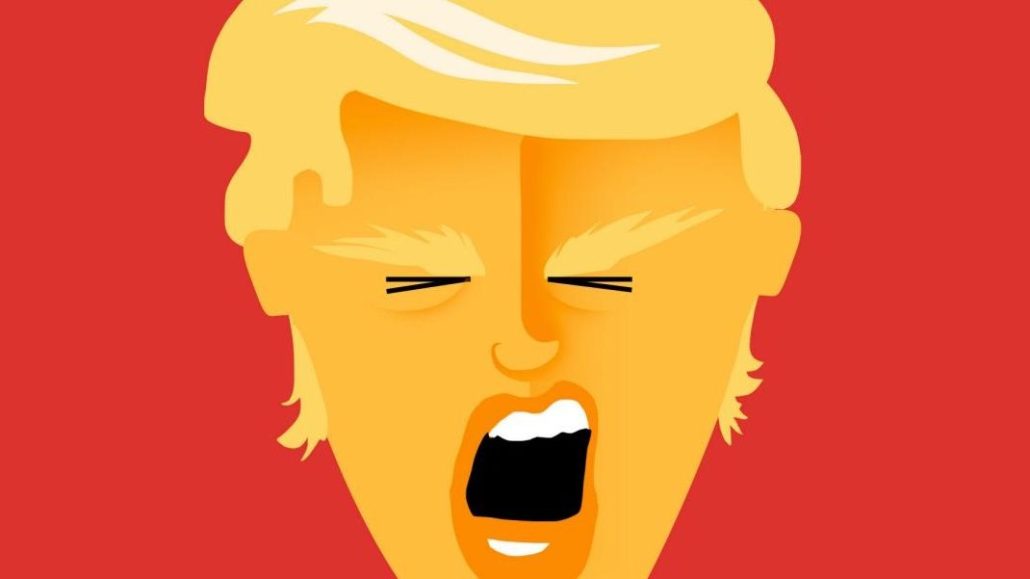
Last week, listeners to the popular Slate podcast “Trumpcast” found themselves caught in a pledge drive. Starting last Tuesday and extending through Saturday, each episode of “Trumpcast” featured at least one interruption calling on listeners to subscribe to Slate Plus, its long-standing premium membership tier. In some cases, the interruptions took up as much as 15 percent of every “Trumpcast” episode.
Those interruptions might have been unexpected for readers, but they worked. The program drove “hundreds” of new sign-ups from Wednesday to Sunday, per Slate Group Chairman Jacob Weisberg. That total — the publisher declined to provide a hard number — was four times greater than the average number of sign-ups that Slate Plus typically gets every week, according to a Slate spokesperson. The results were encouraging enough that Slate will launch a pledge drive across all of its podcasts later this fall, though it declined to be more specific about the plans.
“I would say they beat expectations pretty dramatically,” said Slate Plus editorial director Gabriel Roth.
Roth said the idea for pledge week came about during a brainstorming meeting with senior management. Roth then took the idea to Steve Lickteig and Mike Pesca, Slate staffers who both have extensive experience in public radio, for pointers on how to conduct pledge drives. They also studied an article about the mechanics of public radio pledge drives that Slate veteran June Thomas wrote in 2009.
That research yielded a specific formula: a one-minute entreaty at the start of “Trumpcast” episodes, plus a separate segment tucked into the first third of episodes, featuring Weisberg talking to a Slate colleague about the virtues of Slate Plus. In one episode, Roth discusses Slate Plus’ newsletter and the investigative journalism that Plus revenues fund; in another, Pesca discusses the benefits of an ad-free podcast.
Ad position: web_incontent_pos1
Those moves will be replicated in the podcast pledge drive this fall across a broader number of titles.
Slate has experimented with pledge drives before — it ran one in 2010 designed to grow its audiences. And while Slate Plus offers its members different kinds of content, it has long put podcasts at the center of its push to grow Plus’ membership. It prefers to use podcasts to push Slate Plus, Roth said, because podcasts are habit-forming, simply by virtue of how they’re distributed. “When you listen to a podcast every week, it inevitably becomes a real presence in your mind, in the way that reading a writer’s articles does not,” Roth said. “There’s an intimacy with podcasts that makes people interested in getting more.”
The hundreds of sign-ups from last week’s drive made only a modest contribution to the overall size of Plus’ membership totals, which rocketed upward after Donald Trump got elected to nearly 27,000. A bit of arithmetic suggests that today, Slate Plus accounts for as much as $1.3 million in annual revenue (Slate memberships cost $35 for the first year, and $50 for every year after that). That’s a far cry from the share that public radio gets from its audience, but it’s increasingly meaningful to Slate, which turned 20 this year. “For me to talk about reader revenue replacing advertising revenue would be grandiose at this point,” Roth said. “But it’s true to say that reader revenue is no longer just a fun side project.”
Ad position: web_incontent_pos2
The plans for the fall pledge drive are still coming together. But for now, Roth isn’t worried about annoying the core listeners of Slate podcasts. “Anything you do is going to attract angry tweets,” he said.
“Your podcast app has a fast-forward button,” he added. “We can’t even inconvenience you as much as they can on public radio.”
More in Media

NewFronts Briefing: Samsung, Condé Nast, Roku focus presentations on new ad formats and category-specific inventory
Day two of IAB’s NewFronts featured presentations from Samsung, Condé Nast and Roku, highlighting new partnerships, ad formats and inventory, as well as new AI capabilities.

The Athletic to raise ad prices as it paces to hit 3 million newsletter subscribers
The New York Times’ sports site The Athletic is about to hit 3 million total newsletter subscribers. It plans to raise ad prices as as a result of this nearly 20% year over year increase.

NewFronts Briefing: Google, Vizio and news publishers pitch marketers with new ad offerings and range of content categories
Day one of the 2024 IAB NewFronts featured presentations from Google and Vizio, as well as a spotlight on news publishers.
Ad position: web_bfu



